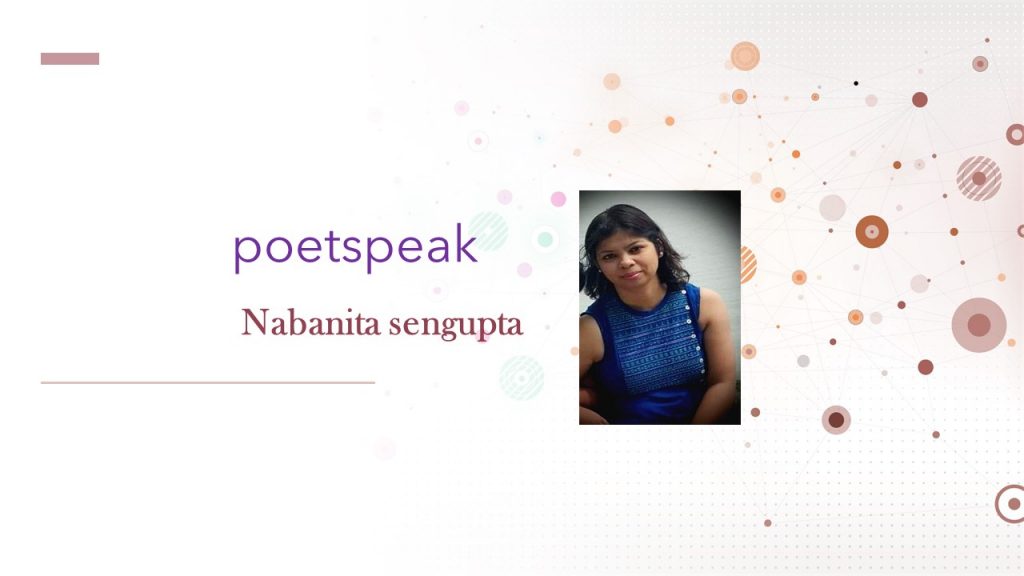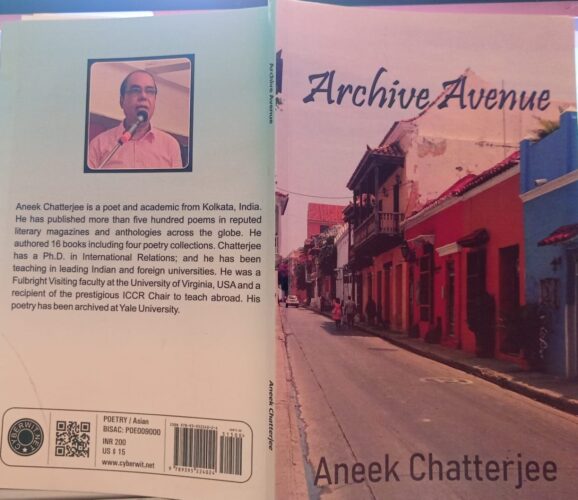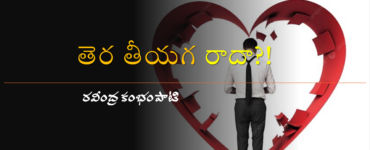I search words…
Words laugh from my back,
From my sides, left and right. (60)
Aneek Chatterjee’s newest collection of poetry Archive Avenue from Cyberwit.net is one such collection of poems where words speak at multiple levels. Sometimes they laugh at you, or with you too. They also make you aware, they sensitize, and they allow you a peep into the poet’s world. This volume of 71 poems, divided into two sections—Mindscape and Pandemic engage the readers in a journey along the poet’s mind through the lanes and bylanes of his consciousness, making the readers co-travellers in his journey. But these poems are not just inward looking—they traverse across the cosmos, as if the poet wants to engage in an understanding of the entire universe around him. There is a deep sensitivity in these poems and a keen awareness of the world in which he lives in. Ralph Emerson, says that “the very design of imagination is to domesticate us in another, in a celestial nature”. Chatterjee’s poems too are the very reflection of such an imagination. His imagination is the lens through which he observes the world, interacts with it, and tries to understand it as well. It is the gateway to his ‘mindscape’. The poet is more of an observer, a chronicler of his times, silently penning his observations. He is not a virulent critic, but an onlooker. He warns, but is hopeful too. He is pained at times, but never despondent. A stream of positivity, in spite of all human failings runs through the book.
The opening poem of the anthology, ‘Nascent Bylanes’ jolts the reader who is about to enter the ’avenues’ of his poetry. Using the metaphor of the balloon target game—one of the commonest sights in the fairs in India, the poet draws a parallel between the pumped up balloons and desires, and mentions the shooting of id, pretence, lust, arrogance, etc. Yet, there is an awareness of the tomorrow’ –
“But do not shoot
nascent lanes and bylanes
beside the bush
Tomorrow
red yellow blue orange
paths may sprout from
nowhere (10)
This concern regarding tomorrow is also visible in several of his poems where the poet voices his ecocritical concerns. Poems like ‘Carcass’, ‘Space’, and ‘Horizon’ engage with the ecological crisis that is a result of anthropomorphic activities. The poet is mildly sarcastic in ‘Carcass’—“A group of innocent plastics/ blocked my drain, the way we/ raised demands on the road.” The carcass of the turtle that he meets is symbolic of human indifference at the damage they are wrecking on the natural world. There is a keen awareness of an inevitable end too—
The sea laughed loud
& drew me towards the front;
I walked, walked, till I was lost
My carcass looked amused on the shore (11)
There is a consciousness regarding death in several of his poems. There is a metaphysical voice ringing across the anthology. The engagement with death is not one of morbidity or loss. But there is a Tagorean acceptance in it. Tagore, in his celebrated song, embraces Death as a beloved. In Chatterjee’s poems, there is a celebratory acceptance of it –
“The team of immortals has been
announced, and glad that I’m
deservedly out. Now it’s time
to write my obituary, happily
in a whiskey evening.” (33)
Death is a dominant metaphor in several compositions in this anthology. In ‘The Smile’ the poet talks about the portrait of a dead person hanging from the wall upon which time has wrought its impact. The time taken for the photograph to degenerate is the same as the time taken by the children of the family to grow up. There is a strange connection drawn between the dead and the living—as if the two are moving along a parallel trajectory of time. The worlds of dead and the living collapse into a single space in the poem ‘Dead Men’. Death is a metaphor through which the poet is in a pursuit to understand life. All that is degenerative in life, and restorative in death, is brought together in the poet’s consciousness.
For a poet with a specialization in International Relations, political awareness is bound to be a significant aspect of his cognizance. In ‘Invisible Eyes’ there is a lament for the way democracy has failed. But even there, we find no hyperbolic. Poet is the raconteur, recording the fall of democracy, as an event in the human timeline—almost as a steady progression of civilization. But one cannot miss the undercurrent of melancholy—“We’re learned now/ Time has changed/ and also, art of living…” (28).
The frenzy of social media and its associated loneliness too captures the sensitive imagination of the poet. In the poem ‘The Blue Moon’ the poet records people’s active interest in photographing the ‘blue moon’. The last stanza of the poem is extremely poignant, and captures his keen sensibility— “At midnight, i observed lonely close/ And found it blue, absolutely/ blue, in lens blurred by indignity, shame’ (52).
Pandemic had changed our worldviews in diverse and irreversible ways. It is impossible that the poet will not be affected by it. The poems in the section titled ‘Pandemic’ are Chatterjee’s responses to that phase. The poem ‘Full Stops’ is an attempt at a comprehensive picture of the life changed after the worldwide lockdown. It’s only by stopping, that we learn to look within ourselves –
“We’re now inside,
Looking into our bones and flesh
To peel off the silver
And protein of audacious id”. (68)
The poem ‘Corona’ justifiable points at the futility of all human progression—weapons of mass destruction, war planes, or high rises, and pushes the readers into deep thinking –
“humans,
think fresh, think anew
there was
something wrong with your
ideas”. (69)
The final poem of this section, which is also the closing poem of this book, ends in an optimistic note. Drawing references from the paintings of Gustav Klimt and Pieter Brueghel, the Younger. While Klimt stands for contentment of human lives in spite of the Death lurking near, Brueghel’s Spring stands for hope. Both the paintings focus on the community lives, showing multiple humans in the same frame. The poem, ‘Summer’ speaks of a resilience of spirit and optimism. It also highlights the human solidarity that had helped us move beyond the pandemic, towards a happier and buoyant existence.
Aneek Chatterjee’s poems are like a continuous flow of thoughts. Minimum punctuations do not hinder the flow of reading. The line breaks decide the places to pause. Even the lines are like staccato—short and hard hitting, perfect for driving ideas home. There is nothing superfluous in the poems. The poet has chosen each word with care, weeding out any extras. Each of the poems in this volume require a careful attention and an engaged reading. This review mentions only a handful of poems while there are plenty more that could have been talked about. For any poetry lover, this is a contemporary anthology of poems that one may confidently dig into and find some excellent compositions that pleases as well as forces one to think deep.
*









Add comment